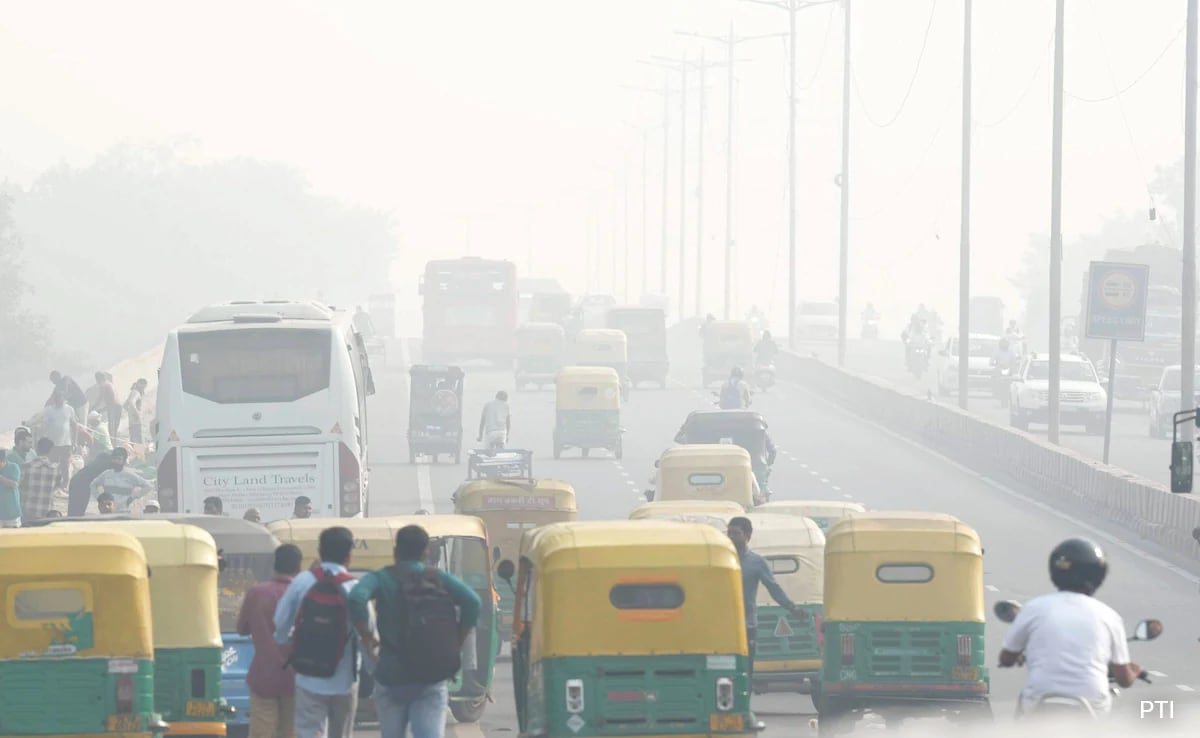
Delhi is choking once again. Thick, toxic smog has engulfed the national capital and its surrounding areas, making Delhi the most polluted place in the world. The air quality crossed the ‘500’ danger mark on November 3. The PM2.5 concentration exceeded the safe limit of 60 micrograms per cubic metre by seven to eight times at many spots. Schools have been shut (barring Class 10,12) and the odd-even rule for cars will return next week.
Government agencies have warned that pollution levels could worsen in Delhi-NCR over the next 15-20 days due to a surge in farm fires in neighbouring Punjab, along with the expected drop in temperature and air speed.
Over the past few years, the brown haze has almost been a new season in Delhi, punctually arriving every October as the air becomes cooler. Winter in Delhi is morphing into pollution season that lasts till February.
For four months, the “air-pocalypse” inspires headlines, discussions and meetings.
After February, the subject of pollution is forgotten by people, the central and state governments, and political parties. The courts, too, get a break from petitions on it. Done and dusted, until the next “sepia season”.
Reasons For Yearly Smog
The average resident of Delhi loses up to 12 years of their life to air pollution, a study suggested recently. According to official figures, in 2022, Delhi’s air was considered “good” or “satisfactory” on only 68 days. One of the biggest sources of air pollution in Delhi-NCR is paddy stubble burning in the neighbouring states of Punjab, Haryana, Uttar Pradesh and Rajasthan. Stubble (parali) burning accounts for about 25 per cent of the pollution in Delhi; satellite images captured more than 1,000 such fires burning in Punjab alone.
The farmers find this a cheap and effective way of clearing mowed fields after harvest, in preparation for the next rabi crop. The governments of Punjab and Haryana have failed to sensitise farmers or create awareness about green methods like the Pusa bio-decomposer, a technology developed by the Indian Council of Agricultural Research (ICAR). This initiative was aimed at naturally decomposing paddy stubble, effectively converting it into valuable manure.
Vehicles are also a major component of the toxic fume, along with dust from construction sites. The Delhi government hardly enforces dust control regulations. Landfill fires throughout the year exacerbate the crisis, because the build-up of methane generates toxic fumes.
Impact on health
The average concentration of particularly harmful PM2.5 particles – which can enter the bloodstream and cause heart disease and respiratory problems – is 98 micrograms per cubic metre. That is nearly 20 times the level considered safe by the World Health Organisation. Coughing, breathing problems, watery eyes have become a common problem among people because of smog.
“Air pollution is a serious problem for all age groups and affects everybody. It affects even pregnant women, which lead to various birth defects, premature deliveries etc. Children are commonly affected by asthma, pneumonia, and breathing difficulties, which may require ventilator support sometimes. It may later lead to chronic obstructive pulmonary disease and lung cancer,” says Vikas Chaudhary, paediatric consultant at Fortis Hospital, Shalimar Bagh, Delhi.
Politics over pollution
The Aam Aadmi Party (AAP) government ruling Delhi for the past nine years has not taken any bold steps to check pollution. Installing two expensive but ineffective smog towers; the odd-even rule for cars; and sprinkling water on roads are symbolic gestures to hoodwink citizens. Delhi and Punjab are both ruled by AAP, but that has not helped reduce or control farm fires in Punjab. AAP leaders in Delhi are quick to point at Haryana and Uttar Pradesh, but their pollution mitigation plan has been in vain. Taking any action against farmers in Punjab by way of a ban on stubble burning or penalty would negatively impact AAP’s vote bank in the state, which it certainly will not risk. This comes at a huge cost to millions of lives in Delhi. The opposition BJP in Delhi has hardly helped, other than add to the political noise. The Centre has offered no solution to this yearly menace.
What Courts Say
The Delhi High Court recently pulled up the forest department for recklessly allowing the cutting of trees without any reason, and held it responsible “for the mess that the Capital is in because of pollution”.
On October 31, the Supreme Court directed Delhi, Punjab, Haryana, Uttar Pradesh, and Rajasthan to file affidavits listing their steps to control air pollution after noting that efforts so far in the national capital were not reflecting on the ground.
“Air pollution in Delhi and NCR has become an annual ritual. Despite the directions of the Supreme Court, the appropriate governments, both central and states, have failed to coordinate and comply, thus making the problem a recurring nightmare for the citizens. Continued failure of executive to effectively discharge its responsibilities have put the onus on judiciary which has continuously been expressing its displeasure at the ineffectiveness of the governments in question,” says Suraj Kumar, advocate, Delhi High Court.
Despite the Supreme Court’s efforts in the past to devise an action plan, nothing seems to be moving on the ground. A three-judge Supreme Court bench shared the sentiment and observed, “Statistics at times can be deceptive…All these steps are only on paper. We have to see what the ground reality is. What is the impact of these steps if the air quality does not improve?”
As always, the courts seem to be the sole saviour. The judgment will come in time. The execution, however, may again defy any time limit. Someone should be accountable.
(Bharti Mishra Nath is a senior journalist).
Disclaimer: These are the personal opinions of the author.




